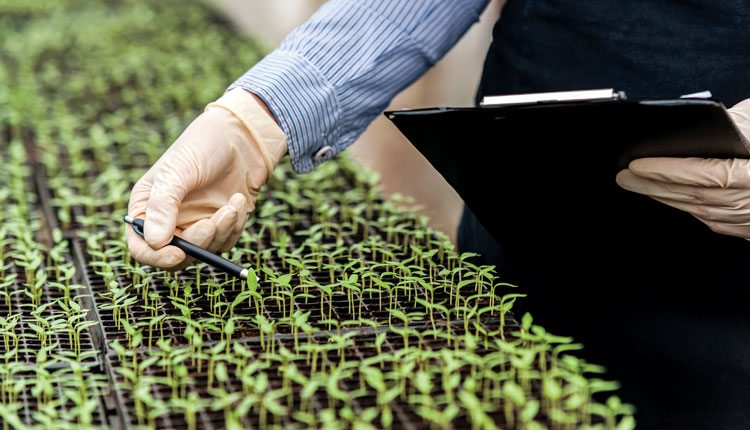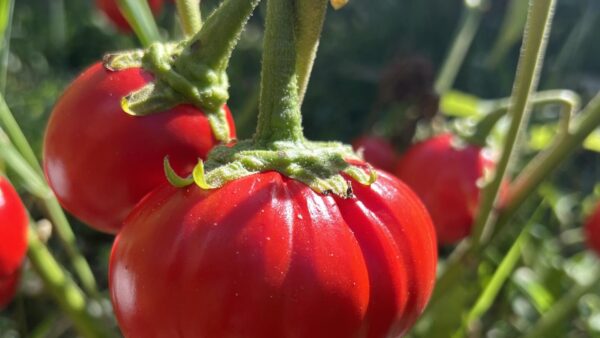New, more cost-effective breeding techniques fall into a gray area, globally, when it comes to regulation. The international seed industry unites to help educate policymakers on plant breeding’s newest innovations.
_x000D_
Since the earliest days, humans have strived to meet the needs of a continuously growing population, and that challenge continues as the global population is expected to grow from today’s more than seven billion people to an estimated nine billion people by 2050._x000D_
_x000D_
This puts pressure on plant breeders, and the rest of agriculture, to find new ways and new varieties that will help to increase yields, increase nutritional content and increase shelf-life._x000D_
_x000D_
Through plant breeding annual yield gains of one to two per cent have been achieved in a number of crops, allowing global food production to increase by 25 per cent between 1990 and 2000, according to the International Seed Federation’s (ISF) Smart from the Start video. Today, there are 124 million people across 118 countries who are deficient in vitamin A and need crops with higher carotenoids. Floods affect an additional 106 million people every year, and 2.2 billion acres are impacted by soil salinity._x000D_
_x000D_
According to the Agricultural Outlook 2012-2021 by the Organisation for Economic Co-operation and Development and the Food and Agriculture Organization of the United Nations, actual yields for the main food crops are well below potential yields in many regions, with yield gaps in many developing countries in excess of 50 per cent._x000D_
_x000D_

_x000D_
Innovation Begins with a Need_x000D_
_x000D_
In working to meet these challenges, scientists and plant breeders have developed precise tools to safely increase specificity and efficiency of breeding, decrease development time and cost and increase genetic diversity for breeding programs._x000D_
_x000D_
These new breeding tools are often referred to as “New Breeding Techniques.” One example of a new breeding technique is cisgenics and intragenics._x000D_
_x000D_
Henk Schouten, a plant breeder at Wageningen University in the Netherlands, explains that cisgenesis is the genetic modification of a recipient plant with a natural gene from a crossable, or sexually compatible, plant. Such a gene includes its introns and is flanked by its native promoter and terminator in the normal sense orientation. Cisgenic plants can harbour one or more cisgenes, but they do not contain any transgenes._x000D_
_x000D_
Another technique that is similar is intragenics. Caius Rommens of J.R. Simplot Co., explains that intragenesis is a novel approach to genetic engineering that improves varieties by eliminating undesirable features and activating dormant traits. It transforms plants with native expression cassettes to fine-turn the activity and/or tissue specificity of target genes._x000D_
_x000D_
Unlike cisgenes, intragenes are hybrid genes, meaning they can have genetic elements from different genes and loci. By using different promoter or terminator regions, expression of genes can be modified, which gives the possibility for new gene recombinations by in vitro rearrangements of functional genetic elements._x000D_
_x000D_
According to the experts, neither cisgenesis nor intragenesis involve recombination between non-sexually compatible organisms and no foreign sequences are present in the final organism._x000D_
_x000D_
These are just two examples of these new breeding techniques, which really aren’t all that new; they’ve been around for more than a decade. Other breeding methods that are being used include site-directed nucleases, null segragants and classic gene delivery systems._x000D_
_x000D_
These new breeding techniques are efficient, flexible and low cost in comparison to more traditional techniques. This means plant breeders at universities and public organizations, as well as those in corporate companies, have access this technology._x000D_
_x000D_
As of now, only Canada and Australia have a product-based rather than a process-based regulatory system. This means the legal parameters in bringing products derived from these breeding methods to market is much less stringent compared to transgenic plants._x000D_
_x000D_
Education Needed_x000D_
_x000D_
But that’s not the case in Europe, the United States and many other countries around the world. The question policymakers face, with pressure from constituents, is whether these techniques should fall under GMO legislation._x000D_
_x000D_
The use of these new breeding techniques has been stalled at the research and development stage because of uncertainty regarding public policy and unclear regulatory status of the new varieties, according to a position paper issued by the American Seed Trade Association._x000D_
_x000D_
Products developed through such breeding techniques might be subject to different regulatory requirements among trading partners, potentially leading to trade impediments and enforcement issues globally._x000D_
_x000D_
It is the general seed industry’s belief that unnecessary regulation of products derived through precision breeding tools would result in undue, costly regulatory burdens, stifle innovation and prevent the adoption of innovative breeding applications._x000D_
_x000D_
In recognizing this, the International Seed Federation launched a Working Group on Plant Breeding and Innovation in 2015 to develop a strategy for political outreach and communication. The working group, in collaboration with ISF’s communications manager, Jennifer Clowes, is working to develop messages targeting specific stakeholders as part of a campaign.











